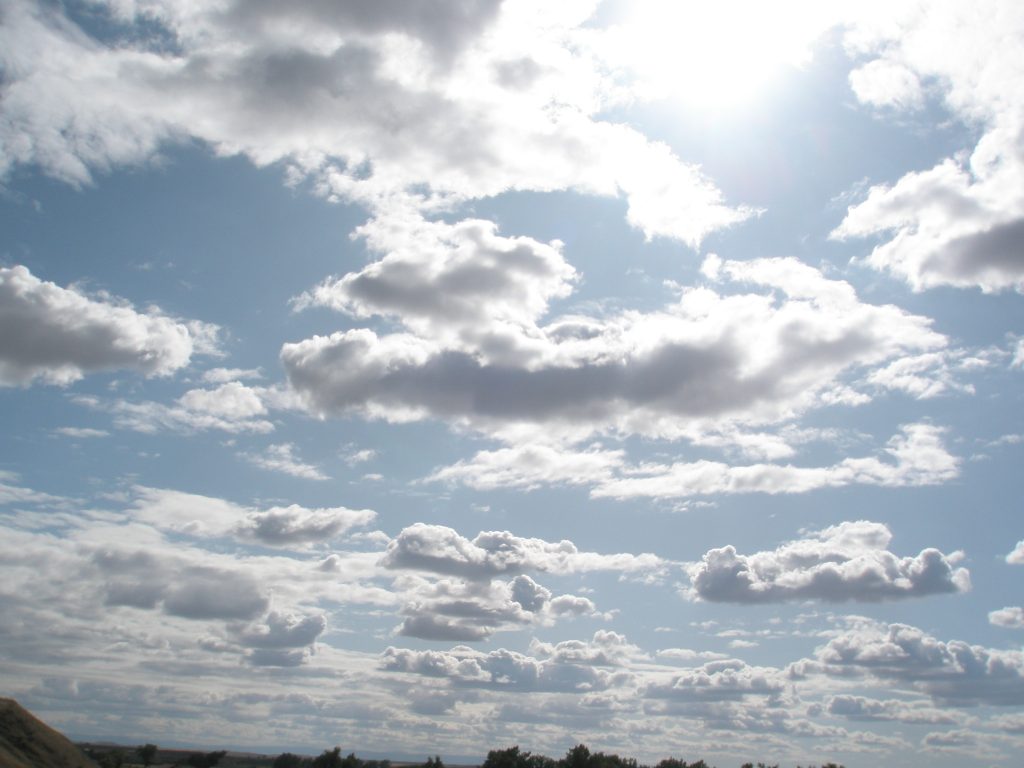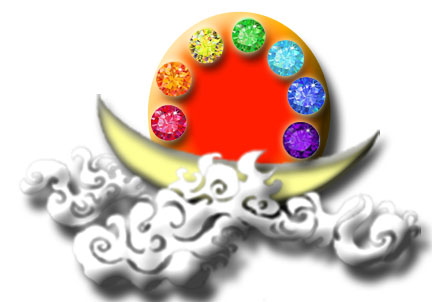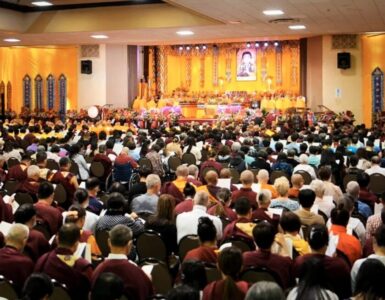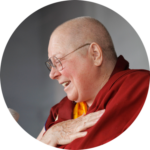
I want to share some background in preparation for our classes on the Paramitas–especially the last two, Meditation and Wisdom. I found that Tsongkapa in one of his many lamrims, the Middle-Length Treatise on the Stages of the Path to Enlightenment, explains the meaning and function of what we know as calm abiding or śamatha and special insight or vipashyana quite clearly from a Mahayana tradition perspective and explains how we should train in them. Being a great scholar, Tsongkapa offers excellent sources for his teachings so you can go even deeper. The main reason that I am so fond of Tsongkapa and I suspect one of the reasons our Buddha Master recommended we study his Lam Rim Chen Mo is that this teaching system places more emphasis on practice than doctrinal theory while still instilling a genuine appreciation of the true import of the great canonical scriptures and their commentaries with frequent quotes from the sutras and the commentaries of great holy beings. These are often sources that are not available to us or at least not in English.
Tsongkapa stressed that the last two paramitas or perfections, concentration or meditative stabilization and wisdom require methods for cultivating both śamatha and special insight (vipashyana) and that both need to be cultivated. He tells us that Shakyamuni Buddha sets forth the nature of śamatha in Unraveling the Intent Sutra by stating that “you settle the mind within and attend to those very phenomena you have been reflecting on just as they are. Whatever mind it may be, since that mind of attention is continuously directed inward, it is called attention (Pamu calls this “engagement”). Repeatedly placing it in this way, it becomes stable, and when physical and mental pliancy arise, this is called śamatha.” I think of this need for “mental pliancy” to be what Susuki Roshi meant when he said we needed “Beginner’s Mind” to learn anything.
The nature of special insight (vipashyana) is set forth in the same sutra: “After achieving physical and mental pliancy, you abide in that state and eliminate other aspects of mind. With strong resolution you finely investigate the very phenomena you have been reflecting on just as they are, the object of concentration being an internal image. Thus, with regard to the images that are the objects of your concentration, any differentiation of the meaning of those objects to be known, any thorough differentiation, full investigation, full analysis, forbearance, acceptance, classification, viewing, and conceptualization is called special insight. In that way the bodhisattva is skilled in special insight.”
Although both samatha and vipashyana can and are used in many different ways in Buddhism, here for our work in studying, understanding, and practicing H.H.Dorje Chang Buddha III’s Imparting the Absolute Truth through the Heart Sutra we use these techniques to realize intrinsic-reality prajna so as to become enlightened and leave samsara. You start with setting the mind in what Dorje Pamu calls the “Memory Abode” or the first level of concentration and contemplation on an object, probably your breath. You may be barely able to hold onto that meditation object before losing it. In fact, because of this focus you may find your mind is even more scattered than usual because you are focusing on your discursiveness and obsession with conceptuality. Your monkey mind fights back, but you persist until you can reach moments of calm abiding or samatha. You continue until you have some degree of control. You learn how to recognize the obstacles when they appear, and you apply the appropriate antidotes until you can abide in a more “Secure Abode” and by the next level of the “Near Abode” you can begin to engage the power of right knowledge and right view to tap your inner wisdom and begin to practice vipashyana. Know that you already have within you the intrinsic-reality prajna or wisdom to do this, but you MUST apply effort to achieve a calm, pliable mind that can “see” it.
The Buddha Master tells us, “Only in calmness can you pursue dhyana. You must be in a state of calmness to be able to strive for dhyana. . . [and] only in a state of dhyana can you discern false phenomena from the manas consciousness and the alaya consciousness. . . All wisdom comes from dhyana. Without dhyana, what arises is worldly cleverness or intelligence” (Imparting the Absolute Truth through the Heart Sutra, pp. 82-83). However, as long as obstructions arise, of course you will forever stay in samsara. This, in very rough terms, is the process, as I understand it. The Buddha Master is providing this path for us as we continue to study Imparting the Absolute Truth through the Heart Sutra. In this same part of the sutra that we will be discussing next week on the paramitas the Buddha Master also adds, “If you practice giving yet do not observe the precepts, it will be difficult for you to pursue the cultivation of dhyana and wisdom. If you only practice giving and do not observe the precepts, if all you know is giving things to others, if giving is everything to you but you do not abide by the precepts, then you will be unable to enter dhyana. It will not be possible for dhyana to arise. If the arising of dhyana is not possible, then the arising of wisdom is not possible. If the arising of wisdom is not possible, then there is no way to see the path wherein the three prajnas lead to the one vehicle. As such, ending the cycle of birth and death will not be achieved.”
Dorje Pamu explains in her Dharma of Concentration, Contemplation, and Visualization how to progress through the various levels of samatha and vipashyana practice that Kamalashila (740-795) tells us in The Progress of Meditation: The Three Bhavanakramas was expressed by Maitreya Bodhisattva to the great Indian Master Asangha (294-376) much earlier. I already gave you preliminary tables summarizing the Stages of Sthiti and their obstacles and their antidotes. I am continuing to refine those charts as my research continues and hope to include all this in one of our classes on C41-Three Principal Stages & Paths of Buddhist Practice: LESSON TWO-The Preliminaries to Taking the Path. I hope we can start that class in April after the Avalokiteshvara Bodhisattva Great Compassion Empowerment Dharma Assembly in Salt Lake City. I believe or I hope that C41 will help us as we dive deeper into DCB22-DCB25 and study the actual text of the Heart Sutra. So far, we are still on the first word of the title–“prajna.”




🙏
📿